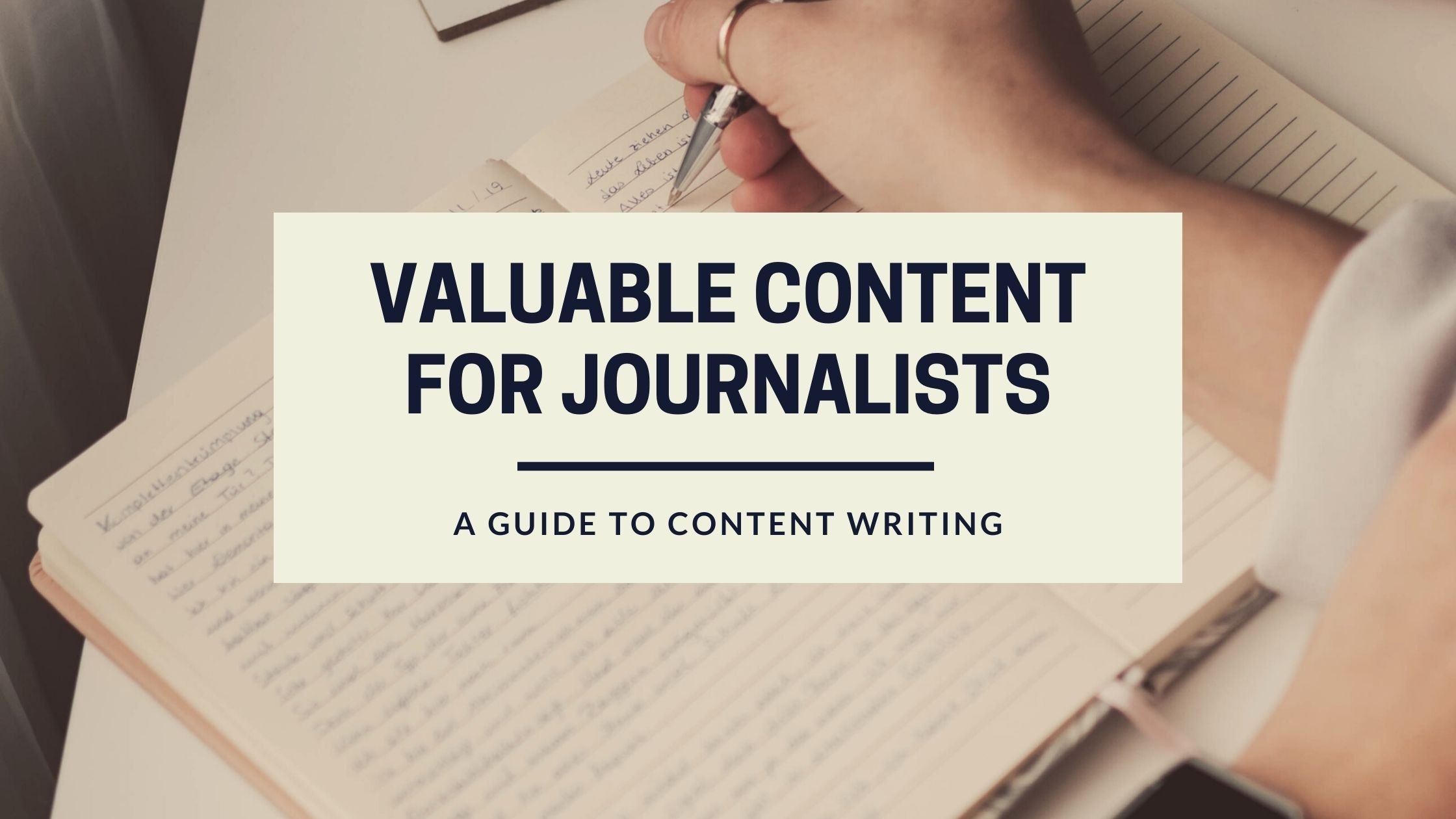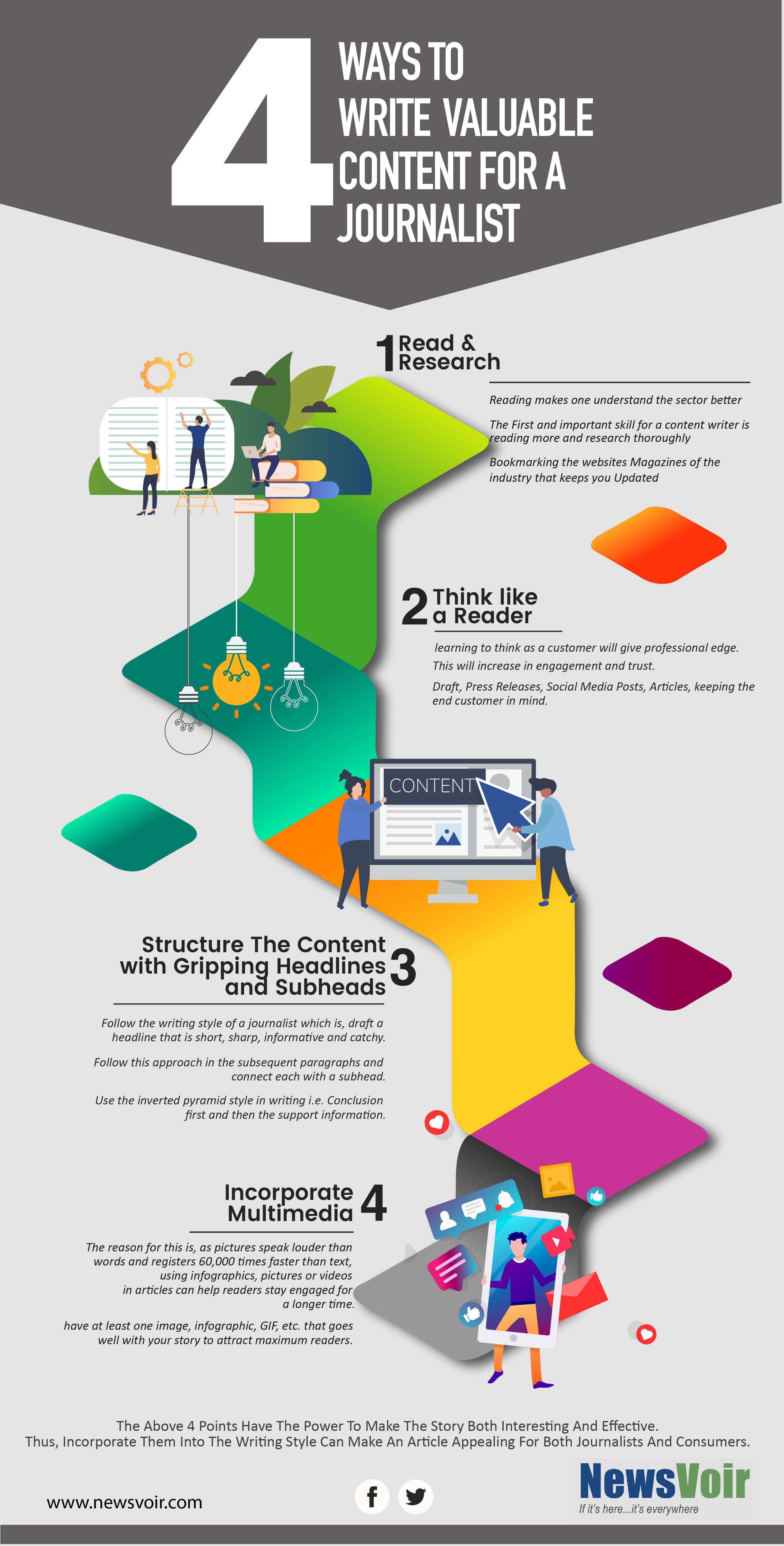Believe it or not, the world of marketing is spun by content, be it the one-liners for a television commercial, a banner advertisement that catches the eyes on social media or a piece of interesting news you might read in a newspaper. It is all about content and hence, the increasing focus of marketers on it.
Moreover, if you happen to be in the field of public relations, no one better than you would understand the need to develop content that is not only useful for the brand but also for the journalists who can support you in reaching the target audience through the right channels.
So, let’s look at the 4 ways in which marketers can write content that will appeal to a journalist-
1. Read and Research
The first and the foremost skill that a marketing professional should imbibe is of reading more and researching the topic thoroughly. Reading makes one understand the sector better and even opens-up avenues on different writing styles. Thus, it is recommended bookmarking the popular websites or read magazines of that industry to find out the latest developments, policies, any new rules, etc. and to also, understand the viewpoints of others.
The research can also assist professionals in gaining confidence to discuss with brand managers as well as journalists on the probable story ideas for the company. It furthermore enables in creating documents used for customer purpose i.e. press releases, interviews, or case studies, and can present the brand’s viewpoint rationally, covering the various aspects.
Hence, as a practice develop a habit of reading and thinking more. You can start by reading one topic, one story, or interview, if you are not already and write your own views on it. This exercise will enable professionals to think differently and tell and conclude the same story in dissimilar ways.
2. Think like a reader
Working on a single or a couple of brands for a few years has its pros and cons. Pro being it gives an in-depth knowledge about the company and sector and secondly, it becomes easier for professionals to adapt according to the way the company communicates. However, it has a con and that is some might draft the content sales-like which means the focus is more on the company’s news than on the fact it is for the audience. Therefore, always think and write as a reader and not as a brand.
Learning to think as a customer will give professionals an edge of connecting their respective brands better with the target or prospective customers. This will thereby, result in an increase in engagement and trust. Another benefit is that a story that focuses not only on the company is more relatable to the audience, as well as to journalists. Thus, draft press releases, social media posts, articles, keeping the end customer in mind.
3. Structure the content with gripping headlines and subheads
With a plethora of information readily available to all, it is so easy for the news to get lost. Therefore, follow the writing style of a journalist which is, draft a headline that is short, sharp, informative and catchy. A headline is a foremost content that will grab the attention of the reader. It should also give a premise to the rest of the article.
Follow this approach in the subsequent paragraphs and connect each with a subhead. This will inform the reader about what’s coming next, keep them inquisitive about continuing ahead and even making it easy in case some want to skim through the story. This writing technique is especially workable in today’s web world where many read stories, articles, reviews on-the-go and many a time in haste.
To attract maximum readership, use the inverted pyramid style in writing i.e. conclusion first and then the support information. Particularly popular amongst journalists, this style is apt for both newspapers and web stories as it allows people to understand the crux of the story even if they decide to stop at any time.
Therefore, to keep the interest of a reader- be it a journalist, brand or consumer, it is important to segment the story into headlines, subheads, and structure it well.
4. Incorporate multimedia
In today’s time, a simple search can lead to over a million results. But a fight that every brand is trying to win is being that one story or an article that the reader opens from the many options available. Thus, to become a probable story, apart from drafting good content, incorporating multimedia to the text has also become vital. The reason for this is, as pictures speak louder than words and registers 60,000 times faster than text, using infographics, pictures or videos in articles can help readers stay engaged for a longer time. Multimedia tools assist stories when the information is either complex or there is a lot of data or statistics that can lead to readers getting confused. Therefore, the use of graphs or charts can then be used to explain the information in a simple form. Adding these tools also gives a break to the text and makes the content easier to read.
Thus, have at least one image, infographic, GIF, etc. that goes well with your story to attract maximum readers. This style is also preferred by many journalists who write for both the print and web medium as this simplifies the story and also, increases the possibility of attracting more readers.
In a nutshell, the above 4 points have the power to make the story both interesting and effective. Thus, incorporate them into the writing style can make an article appealing for both journalists and consumers.
Also Read: 7 MOST COMMON MYTHS ABOUT PUBLIC RELATIONS WHICH ARE MISLEADING

